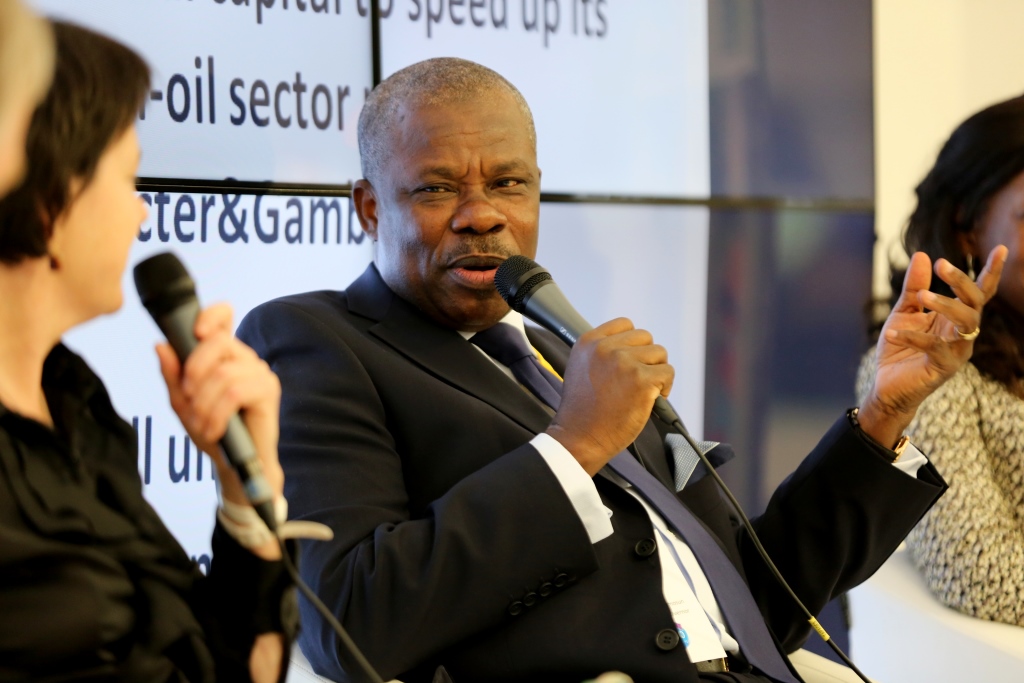Revitalizing through reforestation: Transforming degraded landscape in Ogun State, Nigeria
Ogun State hosted a session at the Cities & Regions Pavilion – TAP2015 at COP21 on Tuesday 8 December. Entitled “Ogun State, Nigeria: Forest Landscape Restoration Project”, the session presented an initiative to revitalize a degraded area of 108,000 hectares within the state through reforestation. In particular, the project will pursue agroforestry, which involves planting trees and shrubs in amongst agricultural crops. The project is unprecedented in both its nature and its scale, with the total area visible from space. As Pierre Delcroix, in charge of Middle East and Africa for LafargeHolcim Geocycle said, ““climate change is putting pressure on us, so we have to come up with new, innovative business models”.
Dr. Henry Neufeldt, Head of the Climate Change Unit of the World Agroforestry Centre (ICRAF) provided details on agroforestry, explaining that it is about implementing the agronomy synergies between trees and crops. Agroforestry has ecosystem benefits, provides additional income to the small farmers through the diversification of products to be marketed, but also generates an efficiency gain for the large scale agriculture projects. Neufeldt added that the ICRAF is involved in the project “to ensure that the work is done in way that is scientifically sound, benefits smallholders, and is both environmentally and economically sustainable.” He emphasized the need to tailor agroforestry projects to specific locations and business models, so that the complementary development alternatives are implemented coherently in order to optimize the environment, social and economic impacts.
H.E. Senator Ibikunle Amosun, Governor of Ogun State noted that almost 70% of Ogun State is arable land. There is therefore a significant potential for improving lives and livelihoods. Governor Amosun stated that the agroforestry project is win-win opportunity for companies and citizens, offering a range of benefits: it will reduce CO2 emissions by increasing vegetation and eliminating the current negative slash-and-burn practices; it will create employment for young graduates and will help to diversify Nigeria’s economy. Governor Amosun insisted on the absolute necessity to answer simultaneously to the short term job creation necessity while preparing the climate change mitigation long term challenge.
Peter Hoddinott, LafargeHolcim Area Manager, Nigeria & West Africa explained that LafargeHolcim is involved in the project because it is aiming to reduce its CO2 production per ton of products by 40% by 2020 compared to the 1990 levels. One lever for this is to find ways to reduce the fossil fuels usage in cement making process: One of the best ways to do so is to use biomass residues as alternative fuel. LafargeHolcim’s goal, he explained, is to “pull the three sustainability levers”: environmental, economic and social. In a few years, the partners would assess whether the project can be a template for the restoration of degraded land in Nigeria and elsewhere in sub Saharan Africa.
Adepeju Adebajo, CEO Cement, Lafarge Africa added that each group in the partnership would have its own set of operational targets. The first goal, she said, is to set up a project management framework. More generally, the first step to success had been acquiring the commitment of the founding partners. There is a vision, she said, to “create something out of nothing” by transforming land that has been degraded extensively.
One key question around the project is that of finance, so the Nigeria Sovereign Investment Authority (NSIA) is a key partner. Created in 2011, the NSIA’s mandate is to play a leading role in driving sustained economic development for the benefit of all Nigerians. The NSIA recognizes the importance of agriculture, which employs around 70% of Nigeria’s population. Speaking on behalf of Mr. Uche Orji, MD.CEO of the NSIA; Richard Eckrich, Head of the Infrastructure Fund at NSIA, explained that the role of the NSIA is to help to raise money and use its expertise in public-private-partnerships, in particular in terms of establishing a “best in class” project governance to enhance the scheme. Eckrich further stated that NSIA’s intervention is consistent with its strategy and echoed Hoddinott’s hope that the project could be replicated if successful.
All stakeholders emphasized the unique and ambitious nature of the project. Ogun State is attempting something that has never been done before, in an effort to revitalize an area from an environmental, economic and social perspective. If successful, the project will have a major impact on Nigerian society, helping to reduce social inequality and to diversify the economy.





